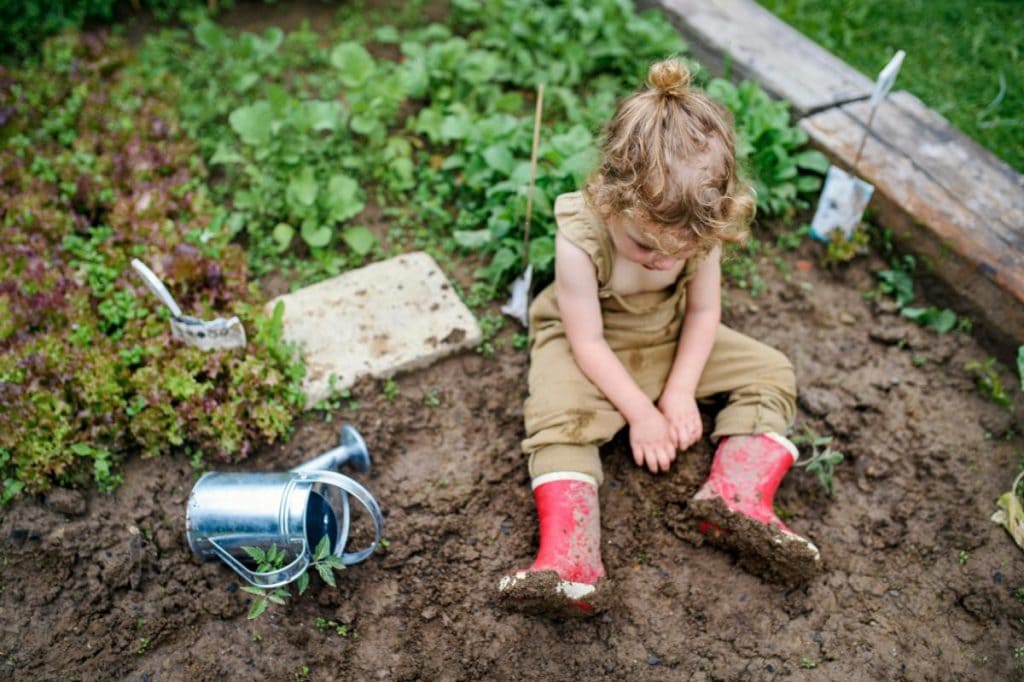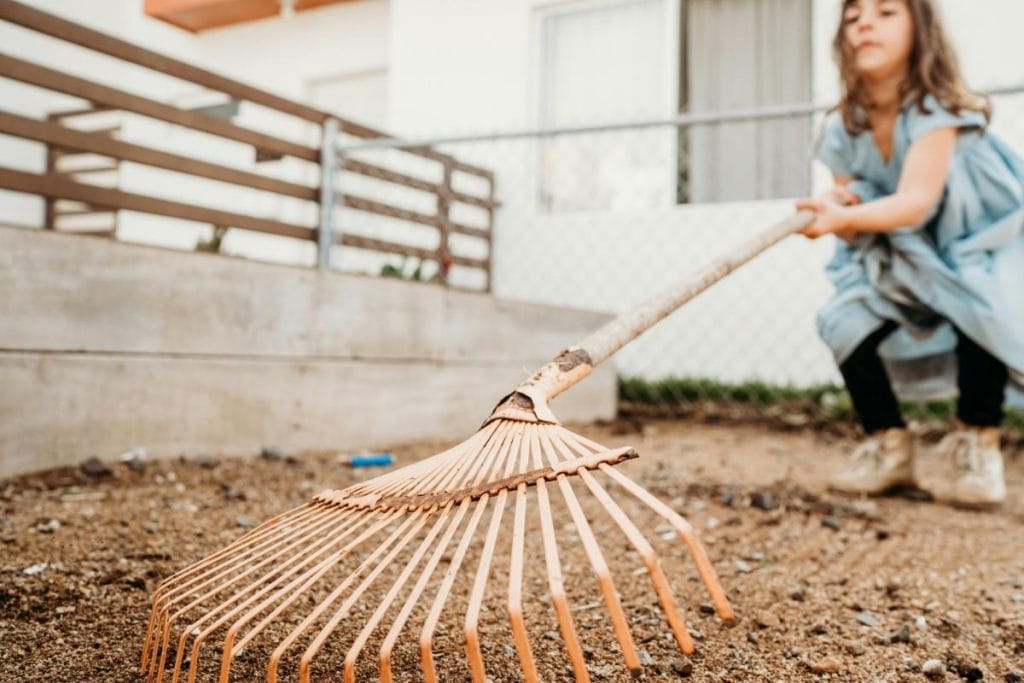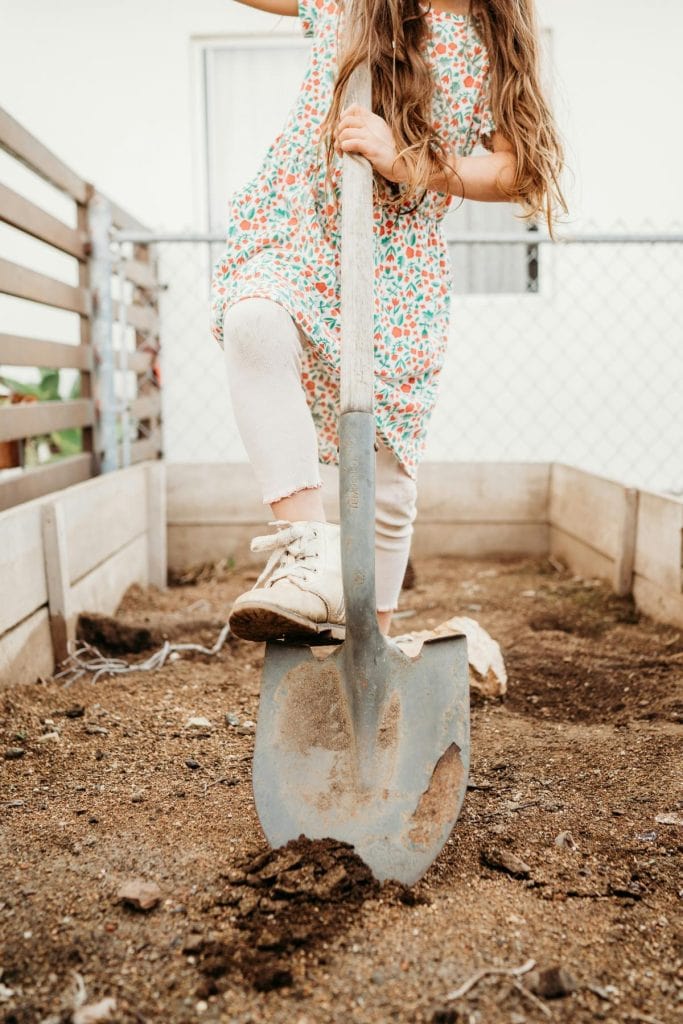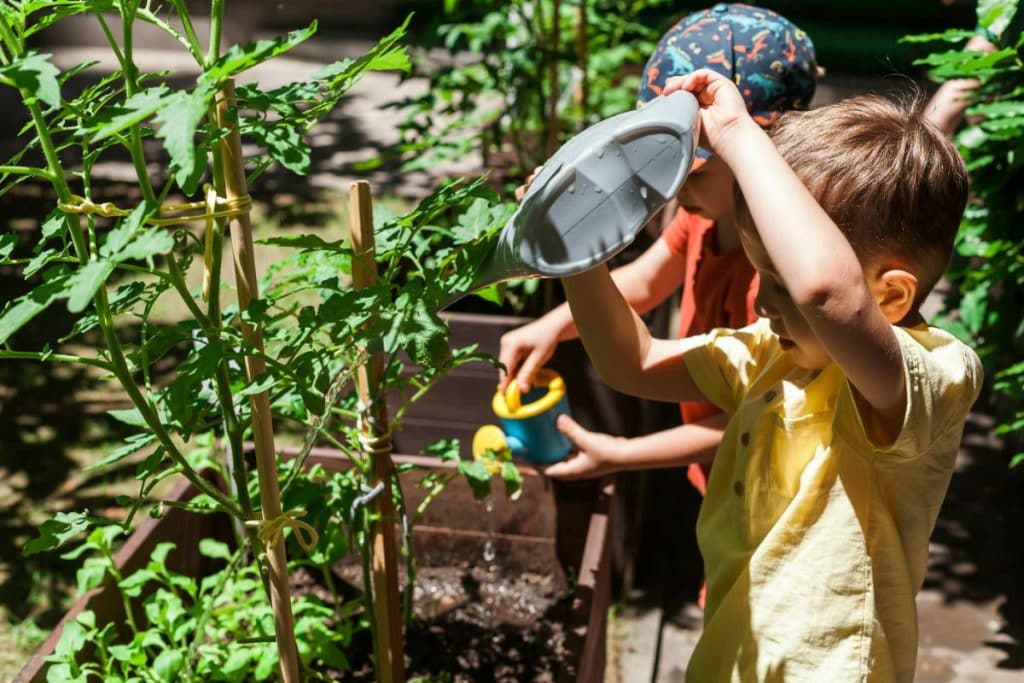Looking for a fun and educational way to spend time with your kids? Gardening might be the perfect answer. Besides teaching them about nature and responsibility, it also provides a great opportunity for family bonding and hands-on learning. Here are some simple and engaging ways to get your kids excited about gardening.

Encourage Them to Get Outside
Get your kids outside and let them explore the garden. Encourage unstructured play where they can dig in the dirt, discover worms, and observe spiders and bees up close. Take the time to explain how these creatures contribute to the ecosystem and why they are important. Show them how bees pollinate flowers, how worms aerate the soil, and how spiders help control pests. Hands-on experience with nature cultivates an appreciation for how the environment works. They will be inspired to learn more about nature when they experience the garden’s wonders for themselves.
Clear Your Space

You should begin by clearing your garden area of weeds, debris, and clutter. Involve your children in this process by giving them small tasks, like pulling weeds or picking up sticks. Teens can operate tools like a weed eater or tiller or use hand tools that require more strength, such as shovels and hoes. Explain the importance of maintaining a clean and organized space for more efficient and enjoyable gardening. Use this opportunity to teach them about composting, turning garden waste into valuable fertilizer for your plants. Preparing the garden for future projects begins with the creation of an orderly and neat space. In addition, you instill positive habits and responsibility in your kids. With a clean slate, you’ll be able to tackle gardening tasks and enjoy time outdoors with your family.
Get Them Some Supplies
Equipping your kids with their own gardening tools can make the experience exciting and engaging. Get child-sized gloves, shovels, trowels, and watering cans designed for small hands. These tools not only make it easier for them to participate but also help them feel like they have an important role in the garden. Consider adding a few fun items, like colorful plant markers or a small wheelbarrow, to make their gardening experience even more enjoyable. Having their own supplies fosters a sense of ownership and responsibility, encouraging them to participate actively in gardening tasks. This investment in kid-friendly tools can boost their confidence and motivation, making gardening a fun and rewarding activity for the whole family.
Let Them Dig Holes & Plant Seeds
Encourage your kids to dig holes to plant seeds or young plants. Show them how to dig the right depth and spacing for different plants with small shovels or trowels. Let them take the lead on this task, even if the holes aren’t perfect. This hands-on activity helps them understand the planting process and gives them a sense of accomplishment. If necessary, you can adjust the holes before planting without taking over completely. This approach fosters independence and confidence while teaching them valuable gardening skills. Plus, digging in the soil can be a fun and tactile experience that keeps them engaged and excited about gardening.
Grow Vegetables

Start a vegetable garden together to make gardening fun and educational. Choose a small, manageable plot and let your kids decide which vegetables to plant, such as tomatoes, carrots, or radishes (whatever their favorites are). This personal involvement makes them more enthusiastic about the project. Teach them how to plant seeds, water regularly, and care for the plants as they grow. Explain the plant lifecycle and the importance of sunlight, water, and nutrients. Watching their vegetables grow and eventually harvesting and eating them gives kids a sense of accomplishment and helps them understand where their food comes from. This hands-on experience nurtures gardening interest and promotes healthy eating habits.
Build Garden Beds
Creating and maintaining garden beds is a wonderful way to get your kids involved in gardening. Let them help prepare the beds by adding fresh soil, compost, or mulch. Give them tasks like measuring and marking rows, digging holes, and planting seeds or seedlings. Allow each child to have their own section of the garden bed to personalize and care for. They can choose their favorite plants, decorate with small ornaments, or even create themed gardens, like a fairy garden or a dinosaur habitat. This hands-on involvement teaches them about plant care, soil health, and garden planning. Working on garden beds together also provides an excellent opportunity for teamwork and creativity. This makes gardening more rewarding and enjoyable for the whole family.

Water the Plants
Give the kids a small watering can that’s easy to handle and show them how to water plants gently. Explain the importance of watering regularly and how different plants have different water needs. Teach them to check soil moisture and water more frequently during hot weather. Assign them certain plants or areas of the garden, fostering ownership and responsibility. In addition to learning about plant care, this activity provides children with a fun way to cool off and play with water.

Dig a Pond
Building a pond with your kids can transform your garden into a wildlife haven and spark their curiosity about aquatic life. Start with a small pond or a container pond if space is limited. As you dig and shape the pond together, explain how it will attract various creatures like dragonflies, frogs, and newts. Show them how to create a habitat with plants and rocks that support these animals. Watching the pond come to life with different species teaches kids about ecosystems and biodiversity. Additionally, they’ll learn about each animal’s needs and how to maintain a healthy environment for them. Besides making your garden more interesting and lively, this project is also a great opportunity for learning and exploration.
Feed the Birds
Setting up a bird feeding station is a fantastic way to engage your kids with nature right in your backyard. Install bird feeders and fill them with seeds to attract different bird species. Equip your kids with binoculars and a bird guide to help them identify and learn about visiting birds. Encourage them to keep a journal of the birds they spot, noting their colors, behaviors, and sounds. Add nest boxes to your garden, especially during spring, to observe bird nesting habits and chicks growing up. This activity not only fosters a love for wildlife but also teaches patience, observation skills, and the importance of supporting local ecosystems.
Start a Cactus Collection
Starting a cactus and succulent collection is a perfect way to introduce your kids to gardening with minimal maintenance. These hardy plants thrive in bright light and require little water, making them ideal for busy families. Choose a variety of cacti and succulents, and let your children help you pot them. Teach them about the different species, their unique features, and how to care for them. Explain the importance of patience, as these plants grow slowly but steadily. Encourage your children to water and monitor their plants. In addition to teaching basic gardening skills, this activity instills a sense of responsibility and the joy of nurturing life. Children of all ages will enjoy their fascinating shapes and sizes.
Get the Schools Involved
Partnering with your children’s school can enrich their gardening experience and provide additional learning opportunities. Encourage the school to incorporate gardening into the curriculum, either through a dedicated school garden or by integrating plant-related projects into science lessons. If the school doesn’t have a garden, suggest starting one or organizing gardening clubs where students can learn together. You can also explore local community programs that offer gardening classes for kids. These classes can provide access to larger garden spaces and a variety of plants, offering experiences beyond what you might have at home. Engaging with schools broadens your child’s horticultural knowledge and fosters a sense of community and teamwork among students.
